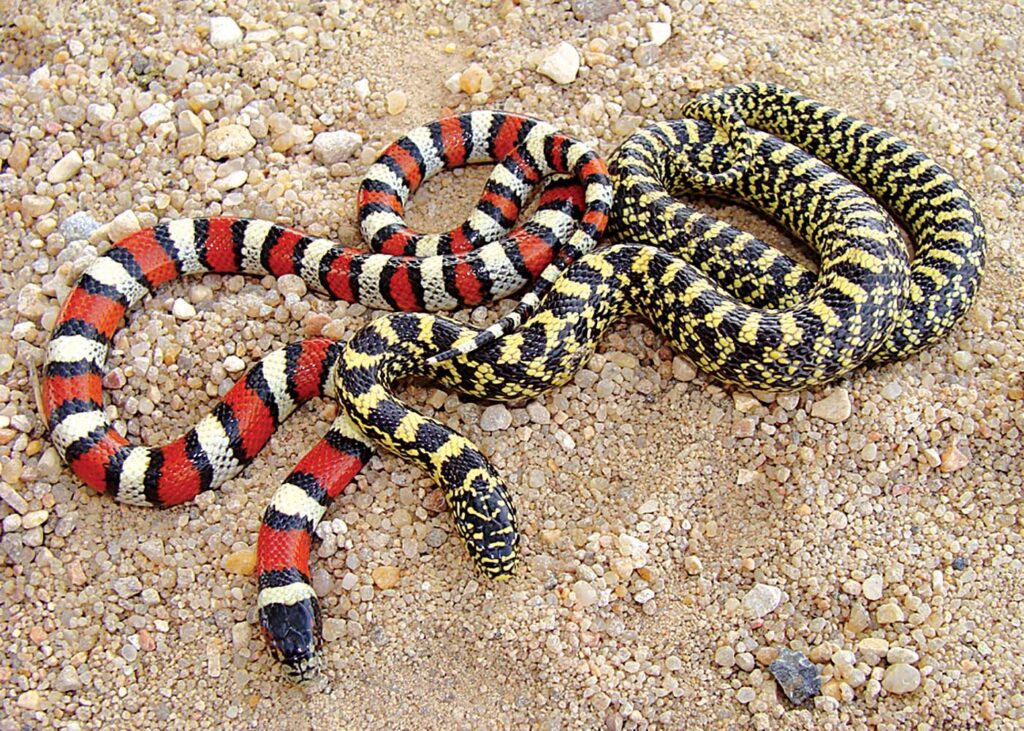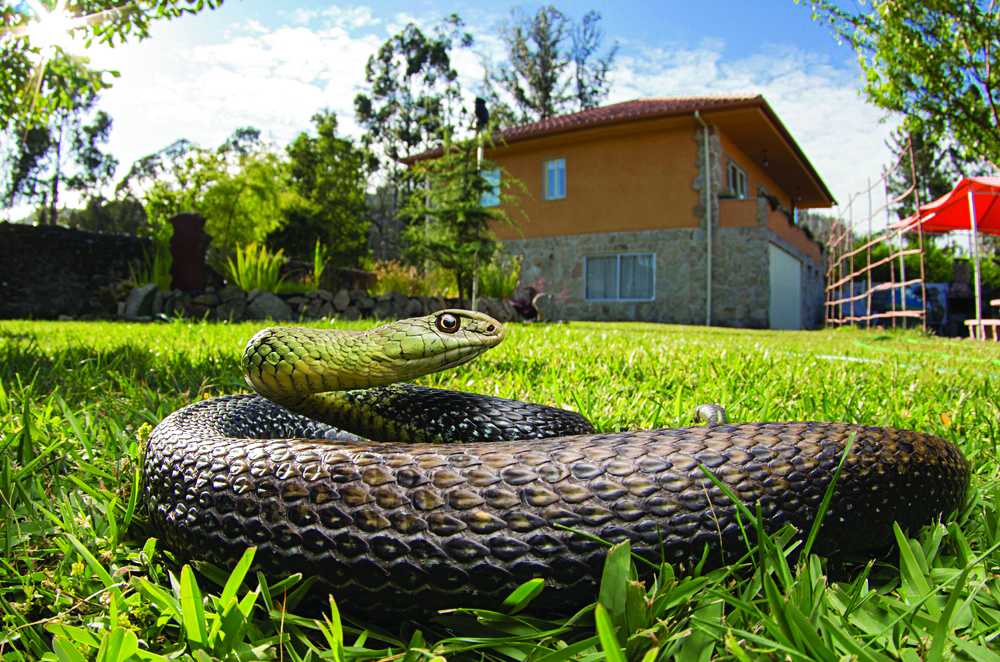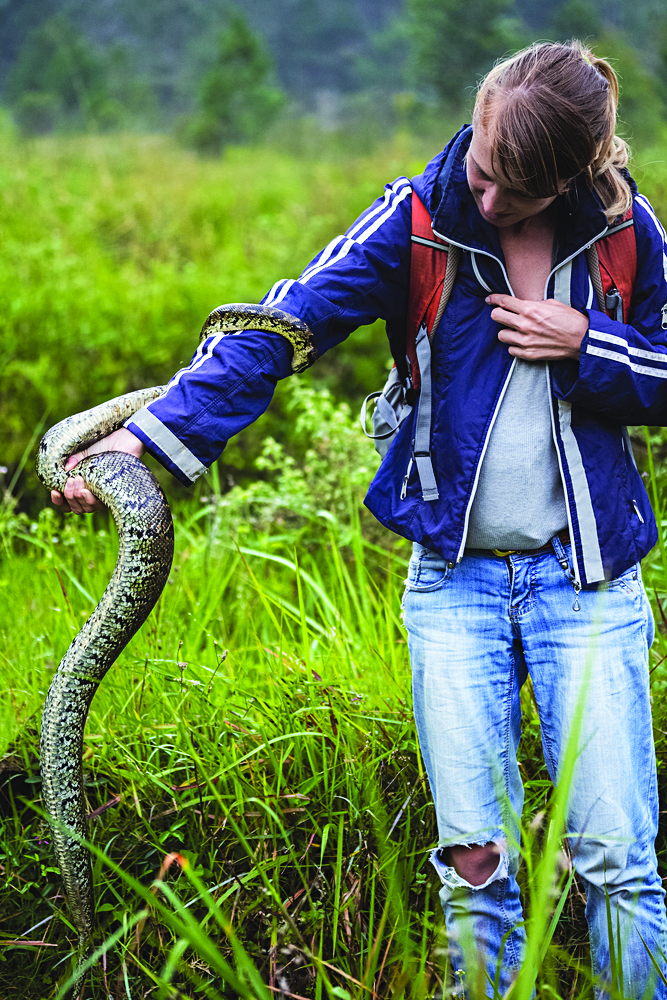HOW SNAKE BITES HAPPEN
Snake bites happen mostly because of three reasons.
PEOPLE BEING CARELESS IN AREAS WHERE VENOMOUS SNAKES LIVE
This is easily solved by wearing a pair of rubber boots in cultivated areas where Cobras and other Serpents are known to forage for Rodents, or using a Mosquito net whilst sleeping to provide a buffer against unwanted bed mates.
PEOPLE NOT BEING AWARE OF THEIR SURROUNDINGS

This takes practice, but in the first place, everybody should not be mindlessly walking anywhere while totally absorbed by their gadgets and friends. Particularly for hikers, being mindful of their surroundings eliminates the chances of brushing up against stinging and irritating plants, or falling into a crevasse.
Being aware while on the street also makes one look less like a prey, lessening the odds of one becoming a victim of a street crime or an accident.

PEOPLE HANDLING OR HARASSING SNAKES
Well, frankly, I don’t think it’s being discouraged enough.
But there is a possibly more pressing concern here. Once you tell people that non- venomous equals harmless, then it automatically gives the impression that venomous equals harmful. Such classifications only reinforce hate towards venomous Snakes. And in the real world, all Snakes are “deadly” to those who do not know them.
Can we really expect a farmer, a housewife, or an IT student to be able to distinguish which Snakes are “non- venomous and harmless” and which ones are out there to knock them off senseless, however imagined?

If you were to see Snakes like these ones inside your home, would you kill them? Would it have mattered if you knew that this Snake didn’t possess deadly venom?
Filipinos are notoriously adherent to the “I’d rather be on the safe side” idea, and in Snake encounters, the most common outcome is that they’ll kill the Snake for another “pa-ID po, poisonous po ba ito?” post. This ritual is repeated in their next encounter with another unfamiliar Snake because in their minds, dispatching the creature is the only logical course of action, one which stands true to the “I’d rather be on the safe side” dictum.
Repeat the scenario all across the archipelago and you’ll probably start to grasp the magnitude of all this senseless bloodbath.
RAISING THE BAR
In other more progressive groups, particularly those that revolve around botany, the admins do ask the members to provide their own initial identification. This is a good exercise because it forces the members to familiarize themselves with the characters that define a particular species instead of being spoon-fed. When an initial identification is incorrect, the other members ask guide questions that allow the original poster to meander through possible answers until he gets the name he is asking for.
Members are also encouraged to upload the highest photo quality that they can. Too often, laypeople will post pictures right after these were taken. Such pictures contain more unnecessary background than subject matter (uncropped) and are generally blurry. There is no attention to quality.
For some reason, such social media users appear to have the impression that however terrible a picture can be, the “experts” can magically make out the image and offer the answer they want to know. Novices are often very quick to jump at any opportunity to show their wares by giving off-the-cuff identifications, while long-timers — who know the most — just can’t be bothered anymore.

Humans are better off knowing that they’re safer leaving Snakes alone than knowing whether or not a Snake had deadly venom.
Member interaction in more advanced Facebook groups isn’t limited to posting or commenting. Every now and then, admins and the more knowledgeable members will host Zoom meetings to tackle a very wide range of subjects. What takes a lot of time to get resolved when fingers and keyboards are allowed to do the talking, are done in just an hour or less. More members are left satisfied and more illuminated than from the more repetitive and vapid ‘’pa-ID po’’ posts.
Herp-related matters are not confined only to animal identification. Being able to tell what species the animals are is only the beginning. Those who content themselves with identifications only are nothing more than armchair naturalists who give the impression that they know a lot and are passionate with what they are doing, but it’s only superficial.
True naturalists are familiar with an animal’s diet, behavior, and ecology, and these are gleaned from long hours spent on the field, observing and photographing animals, not repeatedly sharing posts made by other people and regurgitating information, sometimes with dubious merits. Legitimate students of nature are able to question established ideas even from supposed authorities in the field, and develop theories of their own that are verifiable using an interdisciplinary approach, including biogeography, ecology, botany, and yes, from even their own studies from the field.

Herpetology and herpetoculture are tightly intertwined. However, discussions of the latter are generally avoided in social media. Even in this age, the Philippines remains significantly retrogressive when it comes to herpetoculture. And yet, the idea that a good Snake is only a dead one is widely accepted, and without a permit that takes weeks, if not months, to get issued, people can’t rescue animals to be released somewhere even if their habitat is already burning to be cleared for another banana plantation. And on the other side are the Messiah complexes who justify poaching as a pretext for saving animals.
These matters should be raised so that everyone will have an opportunity to express their sentiments. The Philippines is severely in need of Snake wranglers in each town. If there is one, a homeowner can contact one such group who can send a volunteer or two to extract the Snake and release them somewhere far from human habitation, but also educating the home owners about the importance of having Snakes around.
Such Snake wranglers with a nationwide reach can have a memorandum of agreement with concerned government agencies to make such actions fully legal and unencumbered by bureaucratic permits. Wishful thinking, one might say. But with enough traction, everything is possible. However, it can’t get any traction if it isn’t being discussed in public groups. As you probably can tell by now, there are a lot of matters that can be discussed in local Facebook herp pages, far beyond the expected “pa-ID po” posts.
Despite Facebook’s limitations, it can still be a platform to advance knowledge and awareness. But for such groups to realize their potential, creators and admins have to raise their standards and oblige their members to do the same. Then we’ll all perhaps start to get somewhere.






